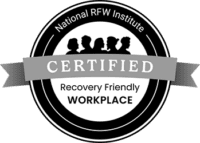Improving Postpartum Care Through Health System and Community Partnerships
Postpartum care is essential for both mother and child, yet many regions, particularly rural and low-resource areas, suffer from significant shortages of healthcare providers and facilities impacting access and outcomes for these often most vulnerable populations.
This leads to inconsistent, low-quality maternal care, contributing to around 290,000 maternal deaths each year. Even in wealthier countries, underserved populations struggle to access adequate care. Expanding maternal health services and creating strong, integrated systems between healthcare providers and community organizations is essential to improving postpartum outcomes and reducing maternal mortality worldwide. 1,3,4
Why Collaboration Matters
Healthcare systems primarily address clinical care, but postpartum support involves broader needs like mental health services, nutrition, stable housing, and social services—areas where community organizations excel. A collaboration between healthcare systems and community organizations allows challenges like social determinants of health (SDoH), including access to food, stable housing, transportation, and mental health services to be addressed. Community organizations provide vital resources while healthcare systems ensure continuity of care, helping to close gaps and reduce disparities, particularly for underserved populations.2,3,4
Building Stronger Networks for Better Care
To build effective partnerships between health care providers, systems, and community organizations, it is essential to establish clear communication channels, shared goals, and aligned incentives. Key steps to achieve this include:
- Establish Clear Roles and Responsibilities: Defining each partner’s role helps avoid duplication of services and allows organizations to leverage their strengths.
- Shared Technology Platforms: Implementing shared technology platforms facilitates real-time communication and data sharing, allowing healthcare systems and community organizations to stay aligned and updated on patient care needs.5
- Train and Support Community Health Workers (CHWs): Integrating CHWs as liaisons between healthcare systems and social support services helps bridge gaps in care. CHWs provide culturally competent care, offer health education, and connect postpartum individuals to essential community resources.2
- Regular Communication and Feedback Channels: Establishing frequent check-ins among healthcare systems, providers, and community organizations is vital to maintaining good quality of care. This can involve case reviews, shared assessments, and the creation of flexible plans to address evolving patient needs.
Partnership Benefits
When healthcare systems and community organizations collaborate effectively, the benefits are far-reaching:
- For Providers: Clinicians can focus on their core competencies: delivering medical care without worrying about managing the full spectrum of social needs. They can trust that community organizations are addressing those factors, creating a more sustainable workload that will help reduce burnout.6
- For Participants: Postpartum individuals benefit from holistic care, receiving both medical support and assistance with other factors affecting their well-being, such as mental and emotional support, access to stable housing, nutritional assistance, childcare and family support, etc. They are less likely to experience postpartum depression, complications, or stress knowing they have access to services that address all their needs, beyond medical concerns.7
- For the Community: Strong maternal health programs contribute to healthier families, reducing long-term healthcare costs and promoting community well-being.7
This seamless collaboration between healthcare systems and community organizations lays the foundation for programs such as the GoMo Health Mom’s Heart Matters (MHM) program, which further advances postpartum care through the integration of technology and behavioral science.
Case Study: Mom’s Heart Matters Postpartum Engagement Platform
The MHM program focuses on enhancing perinatal care, specifically addressing hypertension-related mortality, a leading cause of maternal mortality.
Key Features:
- Patient-guided intervention that advances health equity by seamlessly integrating physical, behavioral, and social drivers of health with the service community
- Bridges the gap between hospitals/providers and community organizations to make care more accessible and give moms the resources they need
- Focuses specifically on supporting mom’s postpartum health vs. traditional care that has been centered around children’s health and wellbeing
Collaboration Partners:
With the support of behavioral health and technology platforms like the MHM program, these partnerships can deliver holistic, compassionate, and effective care to postpartum mothers, benefiting healthcare systems, providers, program participants, and the broader community. Learn more about Mom’s Heart Matters. The initial pilot of The MHM program was implemented at the following:
- Liberty Regional Medical Center
- Annie E. Casey Foundation
- Amerigroup
- Georgia Family Connection Partnership
- Get Georgia Reading Campaign
- Georgia OBGyn Society
- Morehouse School of Medicine
This program exemplifies how integrated health systems and community partnerships can address complex postpartum challenges, particularly for high-risk groups. The collaboration between these organizations highlights the critical role of coordinated partnerships in addressing both clinical needs and SDoH.
Outcomes & Measures:
- 10% reduction in ED visits
- 5% or more reduction in hospital admissions and readmissions
- Improves medication adherence
- Reduction in health disparities caused by SDoH and eliminates racial disparities in postpartum blood pressure monitoring, breastfeeding initiation and continuation rates, maternal functioning and mental health
- Reduction in hypertension related maternal mortality
- Improvements in patient/member experience
- Increase in joy in practice for providers and care coordination
By focusing on heart health education and providing access to essential healthcare services, this program empowers postpartum women, particularly those from underserved communities, to take charge of their long-term health. This holistic model reinforces the importance of building strong healthcare and community networks to enhance postpartum care and ensure better health outcomes for mothers and their families.
References:
- “Postpartum Care Basics.” American College of Obstetricians and Gynecologists, www.acog.org/womens-health/faqs/postpartum-care-basics. Accessed 3 Sept. 2024.
- “The Role of Community in Maternal Health.” National Institute for Children’s Health Quality (NICHQ), www.nichq.org/insight/community-role-maternal-health. Accessed 3 Sept. 2024.
- World Health Organization. “Improving Maternal and Child Health through Stronger Health Systems.” World Health Organization, www.who.int/news-room/fact-sheets/detail/maternal-mortality. Accessed 3 Sept. 2024.
- “Addressing Social Determinants of Health to Improve Postpartum Care.” American Public Health Association, www.apha.org/publications-and-periodicals/news-releases. Accessed 3 Sept. 2024.
- “How Technology Is Transforming Postpartum Care.” Healthcare IT News, www.healthcareitnews.com/news/technology-transforming-postpartum-care. Accessed 3 Sept. 2024.
- “Reducing Burnout in Maternal Health Providers through Integrated Care.” Modern Healthcare, www.modernhealthcare.com. Accessed 3 Sept. 2024.
- “How Maternal Health Programs Improve Outcomes for Providers and Patients.” Centers for Medicare and Medicaid Services (CMS), www.cms.gov. Accessed 3 Sept. 2024.
- UNICEF. (2023). Maternal Health. Retrieved from https://www.unicef.org/health/maternal-and-newborn-health
- Global progress in tackling maternal and newborn deaths stalls since 2015: UN. (2023). Retrieved from https://www.who.int







Find Us Online